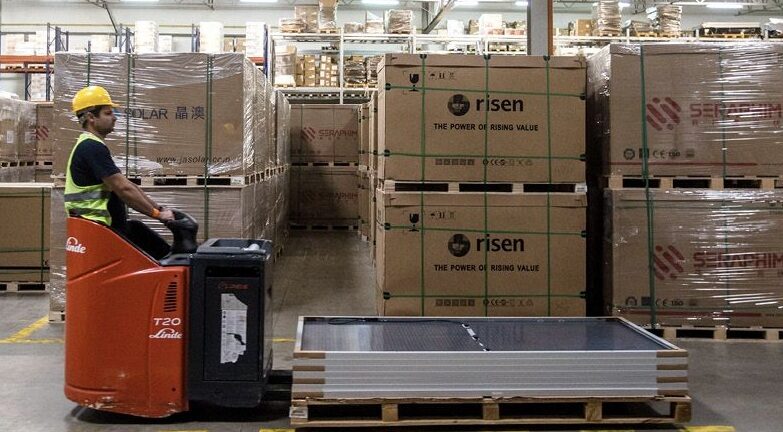Hybrid energy hubs combine renewable energy generation, digital tools, and energy storage solutions, including hydrogen production via electrolysis. Unlike standalone renewable energy systems, these hubs balance energy supply and demand more effectively by leveraging the complementary characteristics of wind and solar power. Designed to adapt to regional conditions such as climate, market needs, and regulatory frameworks, hybrid energy hubs are versatile solutions for integrating renewable energy into diverse sectors, including heavy industry and transportation.
Task 20 emphasizes the potential of green hydrogen as a clean energy carrier. By coupling the electricity generated by renewable sources with hydrogen production, the Task aims to demonstrate the technical and economic feasibility of these systems, which can support decarbonization efforts in areas where direct electrification is not practical.
Collaborative Expertise Across Three TCPs
Task 20 is a collaborative effort involving the PVPS, Wind, and Hydrogen TCPs, each contributing specialized knowledge and resources. This approach ensures a comprehensive exploration of the technical, economic, and societal dimensions of hybrid systems. By combining expertise from these three domains, the Task provides a platform for developing robust solutions that address the challenges of integrating renewable energy at scale.
Addressing Local and Global Needs
The scope of Task 20 is both broad and tailored. It covers the design and operation of hybrid plants while accounting for local diversity in climate, market structures, and regulations. For example, the Task will explore use cases for specific geographic locations, providing insights into how hybrid systems can optimize performance under varying conditions. These studies will include considerations like grid connectivity, storage capacity, and legal frameworks to ensure applicability in different markets.
The Task also focuses on developing reference designs that stakeholders can use as blueprints for hybrid systems. These designs integrate wind, solar, and hydrogen technologies, offering adaptable solutions for both onshore and offshore applications. Task 20’s deliverables will include a shared database consolidating research findings and field trial results, serving as a valuable resource for policymakers, researchers, and industry leaders.
Environmental and Societal Considerations
One of the central objectives of Task 20 is to address the environmental and societal dimensions of hybrid energy hubs. Lifecycle assessments (LCAs) will evaluate the environmental footprint of these systems, examining factors such as material use, emissions, and end-of-life management. The findings will help identify best practices for minimizing ecological impacts while enhancing system efficiency.
Societal acceptance is another focus area. Task 20 will provide tools and templates to facilitate engagement with local communities, ensuring that projects align with public expectations and needs. By addressing issues such as land use, ecological impact, and public perception, the initiative aims to make hybrid energy hubs socially sustainable.
Legal and Economic Frameworks
Hybrid energy hubs require clear regulatory and economic frameworks to succeed. Task 20 will develop resources such as checklists and contract templates to guide project developers through the regulatory process. These tools aim to streamline project planning, reduce costs, and enhance the bankability of hybrid systems. The Task will also explore economic metrics like the levelized cost of hydrogen (LCOH), providing stakeholders with actionable data to evaluate project viability.
Delivering Practical Outcomes
Task 20’s outputs are designed to be practical and applicable. By synthesizing insights from its various subtasks, the initiative will produce guidelines, benchmarks, and recommendations for integrating hybrid systems into energy infrastructures worldwide. These deliverables will support stakeholders in overcoming technical, economic, and societal challenges, enabling the broader adoption of green hydrogen.
Moving Forward with Task 20
As hybrid energy systems continue to gain importance in the global transition to renewable energy, Task 20 will provide the tools, insights, and frameworks needed to make these systems a reality. By integrating wind, solar, and hydrogen technologies, hybrid energy hubs offer a pathway to overcoming the intermittency challenges of renewable energy while supporting broader decarbonization goals.
Author: Bettina Sauer
This article is part of a monthly column by the IEA PVPS program.
The views and opinions expressed in this article are the author’s own, and do not necessarily reflect those held by pv magazine.
This content is protected by copyright and may not be reused. If you want to cooperate with us and would like to reuse some of our content, please contact: editors@pv-magazine.com.



By submitting this form you agree to pv magazine using your data for the purposes of publishing your comment.
Your personal data will only be disclosed or otherwise transmitted to third parties for the purposes of spam filtering or if this is necessary for technical maintenance of the website. Any other transfer to third parties will not take place unless this is justified on the basis of applicable data protection regulations or if pv magazine is legally obliged to do so.
You may revoke this consent at any time with effect for the future, in which case your personal data will be deleted immediately. Otherwise, your data will be deleted if pv magazine has processed your request or the purpose of data storage is fulfilled.
Further information on data privacy can be found in our Data Protection Policy.